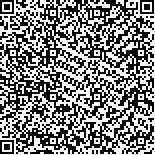|
| 引用本文: | 陈楠生,张梦佳.中国海洋浮游植物和赤潮物种的生物多样性研究进展(三):南海.海洋与湖沼,2021,52(2):385-401. |
| |
|
| |
|
|
| 本文已被:浏览 2318次 下载 1712次 |

码上扫一扫! |
|
|
| 中国海洋浮游植物和赤潮物种的生物多样性研究进展(三):南海 |
|
陈楠生1,2,3, 张梦佳1,2,3,4
|
|
1.中国科学院海洋研究所 海洋生态与环境科学重点实验室 青岛 266071;2.青岛海洋科学与技术试点国家实验室 海洋生态与环境科学功能实验室 青岛 266237;3.中国科学院海洋大科学研究中心 青岛 266071;4.中国科学院大学 北京 100049
|
|
| 摘要: |
| 中国南海是世界上最大的边缘海之一,位于印太交汇区的北端。独特的地理环境和气候条件使其生态环境极其复杂,使得南海海域的赤潮具有特殊性和典型性。近20年来,南海赤潮现象呈攀升态势,对水产养殖业、滨海旅游业、海洋生态系统及人类健康都有着严重的危害。为了系统了解南海海域浮游植物,尤其是赤潮物种的种类组成、相对丰度及年际变化,本文对近30年间(1987—2018)南海海域涉及浮游植物调研的44个航次数据进行了统计和比较分析,共记录到500种浮游植物、65个鉴定到属的未定种和1个未定类的三深碎裂藻。其中,硅藻(289种和37个未定种)和甲藻(186种和21个未定种)占绝大多数,包括赤潮物种149种。其中大部分浮游植物尚未得到系统的分子鉴定。比较发现不同航次报道的物种数目相差较大,种类相似度不高,硅藻和甲藻的相对优势地位无明显演替现象。南海海域最常见的赤潮物种以硅藻为主,包括菱形海线藻、中肋骨条藻、洛氏角毛藻、尖刺拟菱形藻、柔弱拟菱形藻、球形棕囊藻、夜光藻和锥状斯氏藻。本文将为比较研究不同海域赤潮物种的生物多样性,解读宏基因组学及宏条形码分析结果提供参考。 |
| 关键词: 南海 生物多样性 航次调查 赤潮物种 浮游植物 |
| DOI:10.11693/hyhz20200900263 |
| 分类号: |
| 基金项目:中国科学院战略性先导科技专项(B类),XDB42000000号;青岛海洋科学与技术试点国家实验室主任基金,QNLM201704号;中国科学院率先行动“百人计划”:泰山学者特聘专家计划;源头创新计划(人才发展专项-第五批创业创新领军人才研发补助,19-3-2-16-zhc号。 |
| 相关附件: 张梦佳附表1、2、3_new_.pdf |
|
| ADVANCES IN THE STUDY OF BIODIVERSITY OF PHYTOPLANKTON AND RED TIDE SPECIES IN CHINA (Ⅲ): THE SOUTH CHINA SEA |
|
CHEN Nan-Sheng1,2,3, ZHANG Meng-Jia1,2,3,4
|
|
1.CAS Key Laboratory of Marine Ecology and Environmental Science, Institute of Oceanology, Chinese Academy of Sciences, Qingdao 266071, China;2.Laboratory for Marine Ecology and Environmental Science, Pilot National Laboratory for Marine Science and Technology(Qingdao), Qingdao 266237, China;3.Center for Ocean Mega-Science, Chinese Academy of Sciences, Qingdao 266071, China;4.University of Chinese Academy of Sciences, Beijing 100049, China
|
| Abstract: |
| The South China Sea (SCS) is one of the largest marginal seas in the world, located in the northern part of the Indo-Pacific Convergence Region. The unique geographical location and climatic condition resulted in an extremely complex ecological environment with various events, in particular, harmful algal blooms (Al-Azri et al). In the recent 20 years, HABs in the South China Sea have been increasing, which brought about serious damages to the local aquaculture, coastal tourism, marine ecosystem, and human health. To analyze the composition, relative abundance, and interannual variability of phytoplankton, especially HAB species, we examined and compared 44 expeditions in the past 30 years (1987-2018). Altogether, in these expeditions, 519 species and 67 unidentified species were identified, plus Ebria tripartita that belongs to undetermined phylum. Among them, diatoms (306 species and 37 unidentified species) and dinoflagellates (188 species and 23 unidentified species) were the majority species. Most of them have not been identified in molecular biology. The results show that the number of species reported from different investigations was quite different, the similarity of species was not high, and there was no obvious succession of diatoms and dinoflagellates. Among 156 HAB species recorded in these expeditions, the most common HAB species in the SCS included Thalassionema nitzschioides, Skeletonema costatum, Chaetoceros lorenzianu, Pseudo-nitzschia pungens, Pseudo-nitzschia delicatissma, Phaeocystis globosa, Noctiluca scintillans, and Scrippsiella trochoidea. This review provides a reference for the comparative study of the biodiversity of HAB species in different sea areas, and facilitates the interpretation of results obtained in emerging metagenomics and macrobarcoding projects. |
| Key words: South China Sea biodiversity expedition HAB species phytoplankton |
|
|
|
|
|
